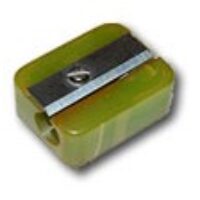We all know about vestigial organs in living creatures, such as the useless vermiform appendix that gives many people a bad time. These were useful in earlier releases of our body plan, but are now just along for the ride.
So here is a sighting of a similarly useless historical remnant in a Bosch power drill.

I refer to the rubber part affixed to the power cord near the drill’s grip. This well-designed part was very handy in the drills of our youth…
 The intent was to keep the chuck key from getting lost, of course… you could stick it into the hole and the rubber flaps would keep it in place when it wasn’t being used to tighten the chuck. These keys were all too easy to misplace, so this was an excellent solution – as the vermiform appendix used to be when we were all eating leaves before we became humans and learned about chocolate and other delights.
The intent was to keep the chuck key from getting lost, of course… you could stick it into the hole and the rubber flaps would keep it in place when it wasn’t being used to tighten the chuck. These keys were all too easy to misplace, so this was an excellent solution – as the vermiform appendix used to be when we were all eating leaves before we became humans and learned about chocolate and other delights.
The thing is, my drill came with the now common keyless chuck… so the key holder is totally unnecessary. At least it isn’t prone to inflammation…



 “He carefully cleaned out his active volcanoes. He possessed two active volcanoes; and they were very convenient for heating his breakfast in the morning. He also had one volcano that was extinct. But, as he said, “One never knows!” So he cleaned out the extinct volcano, too. If they are well cleaned out, volcanoes burn slowly and steadily, without any eruptions. Volcanic eruptions are like fires in a chimney.”
“He carefully cleaned out his active volcanoes. He possessed two active volcanoes; and they were very convenient for heating his breakfast in the morning. He also had one volcano that was extinct. But, as he said, “One never knows!” So he cleaned out the extinct volcano, too. If they are well cleaned out, volcanoes burn slowly and steadily, without any eruptions. Volcanic eruptions are like fires in a chimney.” I was busy putting the basement in order and found a box of much used Lego pieces going back to the kids’ childhood, and in it I found – as is – what you see in the photo.
I was busy putting the basement in order and found a box of much used Lego pieces going back to the kids’ childhood, and in it I found – as is – what you see in the photo.





